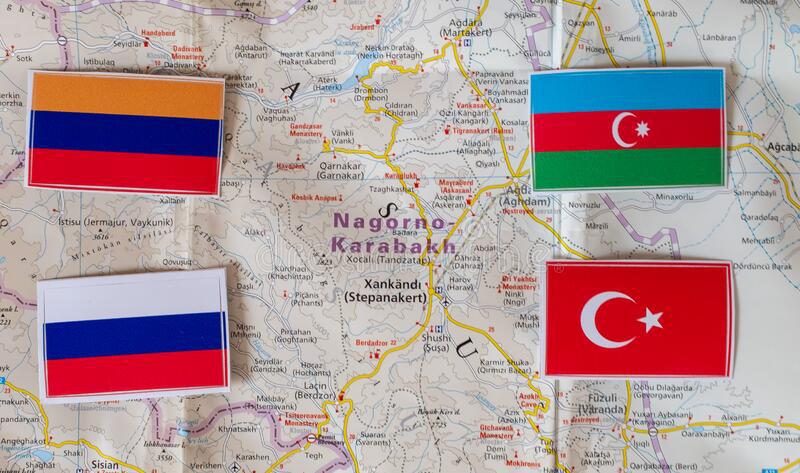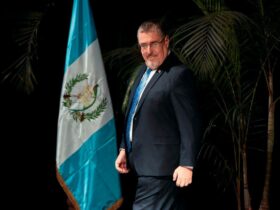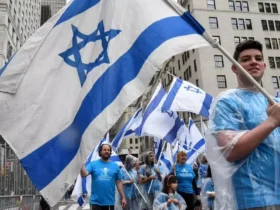On July 12, skirmishes broke out between Armenia and Azerbaijan, leaving 16 people dead and marking the beginning of another cycle of conflict over the long disputed Nagorno-Karabakh region. It is still unclear which country initiated the fighting, but both countries insist it was the other. Following this, tensions briefly cooled before spiking again in late September, when Azerbaijan launched an attack that it claimed was a response to shelling by Armenia. Both countries declared martial law and the resulting conflict killed 23 and wounded over 100 civilians in the Nagorno-Karabakh area. Since then, conflict between the two sides has persisted, and the number of lives lost continues to grow.
This dispute between Armenia and Azerbaijan began almost a century ago in 1921, when Joseph Stalin gave the region of Nagorno-Karabakh to Azerbaijan, a Muslim-majority nation. However, almost 90% of the population identified as Armenian and Christian, and this action isolated the people of Nagorno-Karabakh, known as the Artsakh to Armenians, within a country they did not consider their own.
Despite the circumstances, the situation remained relatively stable until the deterioration of the Soviet Union in the 1980s. In 1988, Nagorno-Karabakh announced that it wanted to join Armenia despite its location within Azerbaijan. Three years later, when the Soviet Union fell and Armenia and Azerbaijan became sovereign states, the two countries went to war to determine who would have authority over Nagorno-Karabakh.
The war was incredibly violent, lasting three years and causing the deaths of over 30,000 people. Many of the casualties were attributed to the ethnic cleansing carried out by forces on both sides, which also displaced tens of thousands of refugees. By the time a ceasefire was negotiated, Armenia had taken over Nagorno-Karabakh and much of the surrounding area. While the ceasefire, brokered by Russia, ended the war, the strained relations between Armenia and Azerbaijan persist. Since then, Nagorno-Karabakh continues to be a part of Azerbaijan but is primarily governed by a separatist republic run by ethnic Armenians and supported by the Armenian government. The Nagorno-Karabakh Line of Contact, the border separating the Armenian and Azerbaijani forces, remains one of the most militarized in the world.
The new resurgence of conflict hinted at the threat of an all-out war between the two countries, one that would likely involve the larger powers of Turkey and Russia. These two countries, who had previously worked together to manage the Armenia-Azerbaijan conflict, have also seen a deterioration of relations this year. In February, Russian airstrikes targeted and killed Turkish soldiers in Syria, and in May, Turkey sent military advisors, drones and Syrian fighters to Libya to oppose a Russian-backed political faction. Turkey and Russia are fighting each other through proxy wars in both Syria and Libya, and Nagorno-Karabakh could very well have been the third.
During the war in the 1990s, Turkey fully supported Azerbaijan (with whom it shares an ethnic and cultural heritage), even closing its border with Armenia in solidarity. Turkey and Armenia have long been at odds, with the latter pushing for recognition of the Armenian genocide in 1915 and the former refusing to acknowledge it. Russia has economic ties to both Armenia and Azerbaijan, but has a closer relationship with Armenia. Currently, Armenia hosts a Russian military base and is part of several Russian-led regional alliances that include the Eurasian Economic Union and the Collective Security Treaty Organization.
Armenia had already claimed that Turkey is involved in this newest bout of fighting, and accused a Turkish fighter jet of shooting down an Armenian jet in May. These claims were initially denied by Turkey, but satellite images of Azerbaijan showed parked Turkish planes. Later, Azerbaijan’s president admitted that the planes were there, but said they had not been used in combat. The Turkish president, Recep Tayyip Erdoğan, has openly declared support for Azerbaijan, and other governments monitoring the situation, including France and Russia, say that Azerbaijan has been attacking Nagorno-Karabakh with Turkish drones. These nations also allege that foreign fighters from Syria are being brought into the conflict by Turkey on behalf of Azerbaijan.
Russia, on the other hand, had called for restraint from the two countries and refrained from getting directly involved. Had Azerbaijan attacked civilian areas deeper in Armenia, a defense treaty between Russia and Armenia would have been triggered, forcing Russia to intervene militarily and counter Azerbaijan. Possibly in recognition of this, Azerbaijan mostly limited its attacks to territory claimed by the Armenian-led separatist government in Nagorno-Karabakh.
Reactions from the rest of the international community were rather limited. The United States, France and Russia, the leaders of the OSCE Minsk Group that has been working to end the conflict since 1992, issued a joint statement condemning the escalation of violence, as did the European Union. However, no countries in either of these coalitions announced plans to get further involved in the situation. Seeing the reluctance of foreign governments, the Armenian diaspora took to the streets in protests around the world to try and generate media coverage and action. Hundreds of Armenians from all over Europe protested in front of the European Parliament building in Brussels in August. Similar action was taken by Armenians in the United States, particularly in southern California, which has the largest population of Armenians in the country. Despite their efforts, the intervention by foreign governments never came.
Two weeks after the fighting in September began, Russia negotiated a temporary ceasefire between Armenia and Azerbaijan in order to allow for the return of prisoners and bodies of the deceased. This quickly fell apart following attacks in both Armenia and Azerbaijan the day after the ceasefire took effect, leading to accusations from both countries of violating the truce. This set off another week of fighting until a second ceasefire was established. Once again, it did not even last a full day.
On November 10th, a third attempt at peace was arranged by Russia, under which Armenia will return to Azerbaijan land that it had taken in during the war that followed the fall of the Soviet Union. The agreement, which is also supported by Turkey, deployed Russian peacekeepers along the Nagorno-Karabakh Line of Contact and required the Armenian forces to withdraw. The Russian peacekeepers are currently scheduled to remain there for five years, and will also be joined by Turkish forces. The ceasefire has held so far, hinting at a possible end to this round of conflict between Armenia and Azerbaijan.
Since the news broke, Azerbaijanis have been celebrating the news, reveling in a victorious end to a long, drawn-out conflict. However, public sentiment in Armenia has been anything but relieved. After news of the ceasefire broke, protestors in the Armenian capital of Yerevan ransacked government buildings and attacked one of the Parliament speakers. Many Armenians feel betrayed by Russia, who they considered one of their closest allies. Only time will tell if the ceasefire will last, but whether it holds or not the tensions between Armenia and Azerbaijan will remain for a very long time.







